Flies often become a common problem in many social settings. House flies and other fly insects occupy an important position in the suborder Brachyceratops of Diptera and have attracted people's attention due to their various adverse effects. These fly insects have various aliases such as flies, larvae flies, blow flies, hook flies, bluebottle flies, crow flies, etc. There are about 3,000 different species of fly insects in the world, and their larvae are often called maggots.
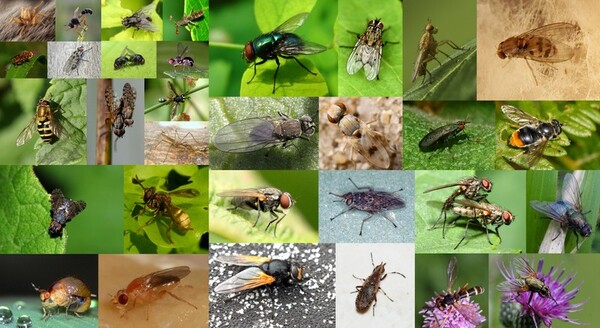
As one of the "four pests", flies mainly feed on decaying organic matter, so they are often found in environments with poor hygiene. They are widely regarded as pests because of their sucking mouthparts, which can easily contaminate food and spread diseases such as dysentery. In addition to causing troubles such as harassment, food contamination, and blood-sucking bites, what is even more serious is that they spread a variety of diseases and cause myiasis.

So which type of fly is the most harmful? Today, we will take stock of the 10 most disgusting flies in the world, including: tsetse fly, human skin fly, horse fly, screw fly, stomach fly, stable fly, sheep fly, etc. Let’s learn about them together.
1. Tsetse fly (blood-sucking expert transmits diseases)
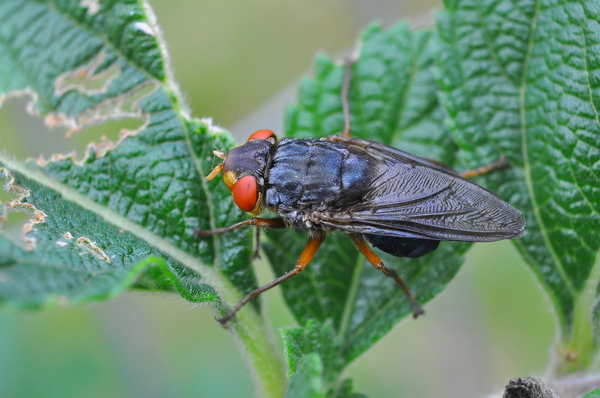
The tsetse fly is generally considered one of the most dangerous flies. Although it is only one centimeter long, its mouthparts are extremely sharp and can pierce the skin of humans or animals and suck blood. This fly is mainly found in 37 African countries south of the Sahara Desert. When tsetse flies bite humans or livestock, the parasites in the body will also enter the bloodstream, causing the victim to have symptoms such as fever, drowsiness, and anemia. Once these parasites enter the central nervous system, they can cause the fatal trypanosomiasis, also known as sleeping sickness. While prompt detection and medical treatment can save lives, if it is not treated promptly, the consequences can be disastrous.

Statistics show that about 3 million livestock die every year due to diseases spread by the tsetse fly, causing economic losses of up to US$4 billion. About 60 million people live under the influence of tsetse flies. Every year, about 500,000 people are infected with diseases transmitted by tsetse flies, and 50,000 of them die.
2. Human skin fly (parasitic human body)
One of the most famous and feared species is the hominid fly of the family Muscophoridae. This fearsome fly can lay an astonishing number of larvae at a time. Each female fly can hatch more than 600 larvae in just a few days. These wild flies are not selective about their hosts and can attack squirrels, cattle, monkeys and even humans.
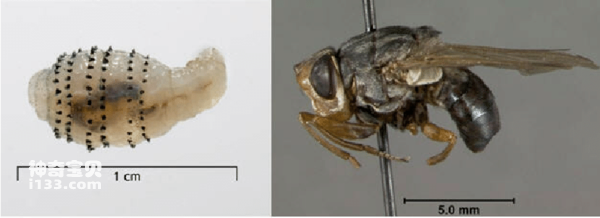
Once these invaders survive in the host's body for about 8 weeks, they will feed on blood from the host's body and rapidly gain weight. These fly larvae have spines on their backs that penetrate muscle tissue and surround themselves with burrs to anchor themselves in the host's tissues. Sometimes they can even invade soft muscles around the eyes, etc. It is quite difficult to remove these larvae, especially when they invade the human brain and nervous system, the consequences are more serious.
3. Horsefly (Vicious and parasitic, it will form ulcers when bitten)
When it comes to one of the most feared flies, the horsefly must be mentioned. These horse flies not only parasitize other animals to satisfy their appetite, but are also good at secreting a glue-like substance to adhere their eggs to the fur, lips, noses and other parts of horses, donkeys and other animals. When humans are close to animals such as horses or donkeys, horse flies will also fly to the human body to suck blood and lay eggs. These horseflies are vicious and often attack all kinds of warm-blooded animals, including humans. Once bitten, a painful and itchy skin lesion usually occurs, followed by a possible delayed local allergic reaction with symptoms such as erythema, edema, and urticaria.
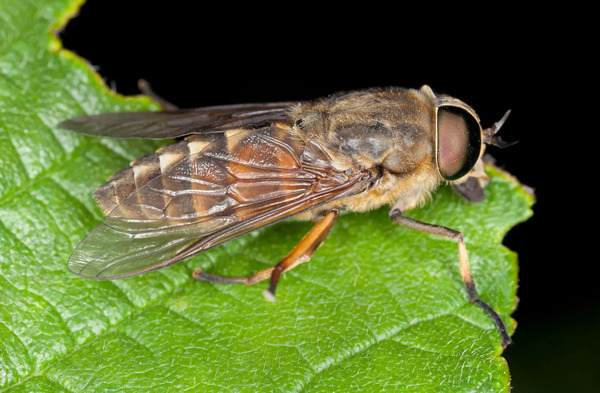
Some horseflies even choose to lay their eggs inside mosquitoes. When a mosquito sucks blood, it injects body fluids containing horsefly eggs into the body, where the eggs hatch. Such parasitism causes ulcer-like swellings on the victim's body, posing a serious threat to health and life.
4. Screwworm (aggressive, blood-drinking, flesh-eating fly maggot disease and dysentery)
As one of the most feared fly species, the spiral cone fly often attracts attention in fly species inventories. This fly belongs to the family Calliphoridae and is an extremely aggressive predatory fly. The larvae are born with two sharp and sharp incisors. They are spread through these natural organs and can enter the bodies of mammals (including humans) to suck blood and eat flesh.
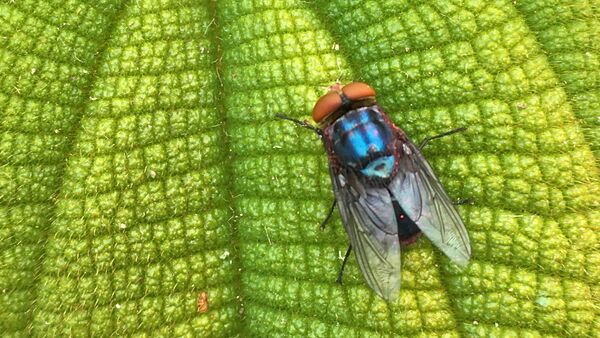
Screwworm flies are aggressive to any small wounds on warm-blooded animals, and they use these wounds to lay eggs. The hatched fly maggots feed on animal tissue, which can harm the host animal or even lead to its death. Not only are they harmful to domestic animals, screwworm flies are also harmful to wild animals and even pose a threat to humans. In areas where screwworm myiasis is endemic, both public health and the economy are severely affected.
5. Stomach fly (strong parasitic ability)
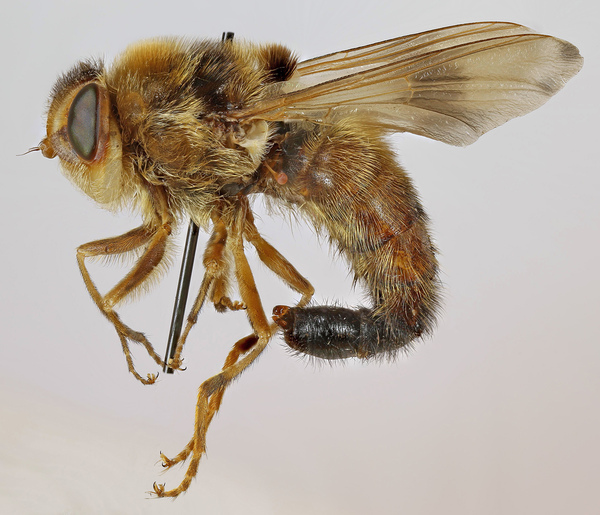
Who is the most disgusting fly? Stomach flies are undoubtedly disgusting insects that cause physical nausea and fear. Known for their extraordinary parasitic abilities, stomach flies are larger than ordinary flies or fruit flies. Its larvae, commonly known as maggots, are notorious for parasitizing the human body. After hatching, the stomach fly larvae will burrow into the host's skin and live there, a process that is horrifying.

Once the maggot is parasitic in the host's skin, the tip of its tail will be exposed on the surface of the skin, and the breathing tube is connected to the outside world through this point, providing the oxygen needed by the larvae. Because the parasite's body is covered with rings of black barbs, it will be extremely difficult to remove while it is still alive. Especially when these parasites live around the eyes, treatment becomes particularly tricky.
6. Stable fly (Vicious blood-sucking character that spreads anthrax and trypanosomiasis)
The stable fly is a common and very scary fly species in my country. Its main territory covers most parts of my country, mainly in the Northeast, North China and Northwest regions, while it is relatively rare on the Qinghai-Tibet Plateau. The appearance of this fly is similar to that of a housefly, and it is good at using piercing and sucking mouthparts. Its larvae usually breed in livestock manure or decaying plant matter, while the adults are mainly active outdoors, and their main activity time is during the day, preferring to suck. The blood of domestic animals and occasionally human blood.
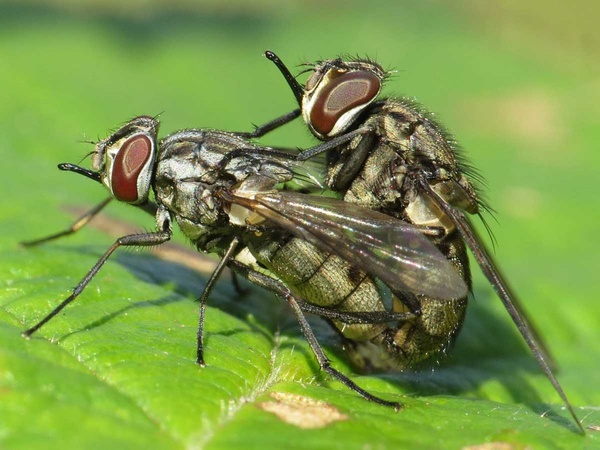
Stable flies are vicious blood-sucking flies that often live in sunny open areas, but they will also move indoors when the weather is bad. In addition to directly affecting the health and productivity of livestock, stable flies can also transmit some diseases, such as anthrax and trypanosomiasis and other pathogens, causing considerable harm in terms of disease transmission.
7. Sheep fly (causing eye myiasis)
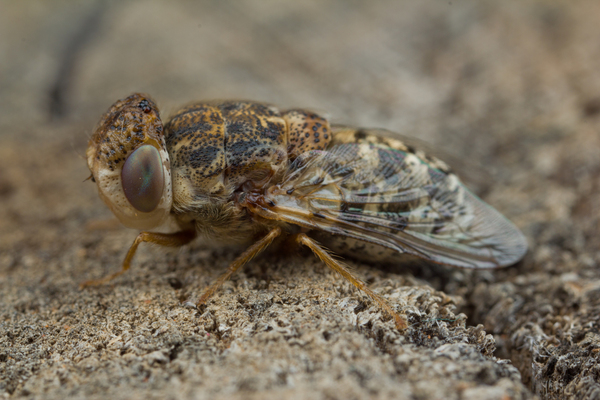
The sheep fly is one of the more harmful fly species. This fly is an important parasitic fly and mainly attacks sheep. The larvae of the sheep fly parasitize in the nasal cavity and surrounding sinuses of sheep, and sometimes enter the trachea, lungs and even the brain, causing myiasis in sheep. Symptoms in infected sheep include purulent nasal discharge and sneezing, which may be followed by restlessness, difficulty breathing, chronic rhinitis and frontal sinusitis.
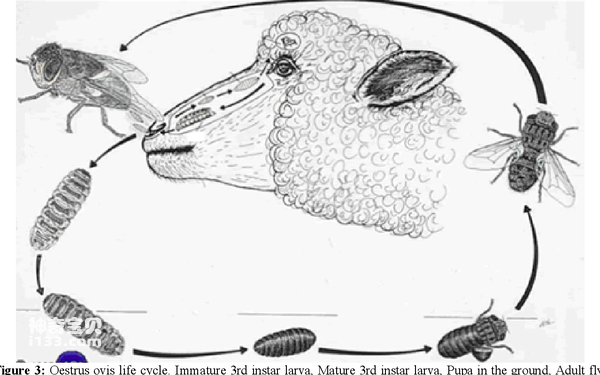
Occasionally, humans are infected by the larvae of the sheep fly, causing eye myiasis. The main symptoms of eye myiasis include tearing, photophobia, and foreign body sensation, which may lead to conjunctivitis, corneal opacity, and even blindness.
8. Greenfly (spreads intestinal infectious diseases causing myiasis)
Among the ten most disgusting flies, the famous "green bean fly" has to be mentioned. Blowflies are vectors for human and animal diseases such as dysentery, and the green fly is a major representative of this family of flies. This fly is widely distributed in China and has strong adaptability. It can be seen near human settlements and in the wild. The larvae feed on typical corpse carrion and mainly breed in rotten and smelly materials, such as corpses, fish, shrimps, garbage, etc. The adults are particularly sensitive to smelly fish meat and can invade the indoor environment of residential areas.
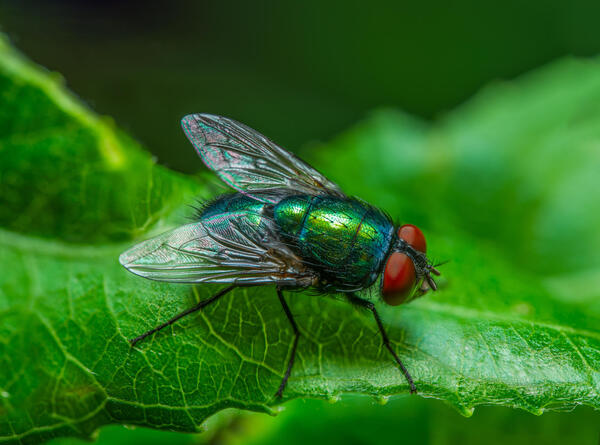
This species can transmit intestinal infectious diseases and is one of the primary flies responsible for larval infection of wound tissue. Female flies will choose to lay eggs in putrid wounds and boils on humans and animals, causing infection by fly larvae. This behavior not only causes myiasis, but may also cause the spread and infection of other diseases.
9. House fly (high fecundity, causing myiasis everywhere)
The house fly is a fly species closely related to humans and is widely recognized as a worldwide health pest. They are widespread and can be found in almost every warm climate inhabited by humans around the world. Whether it is an ancient temple on a high mountain or a small village with beautiful mountains and rivers, house flies can survive and multiply. House flies can survive even in freezing temperatures or harsh growing conditions, and their populations can grow rapidly once environmental conditions improve. This fly mainly inhabits places where feces, garbage and organic matter are concentrated.
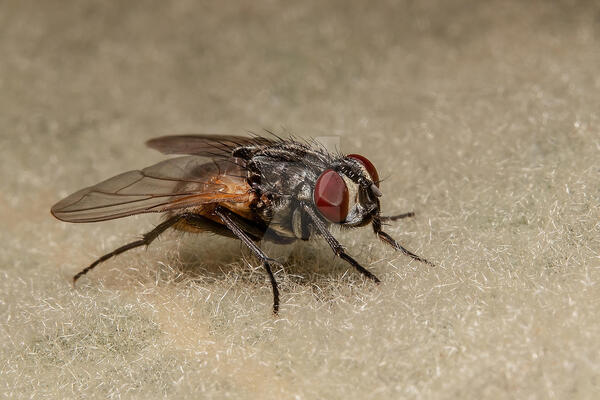
The house fly is a highly prolific insect that can carry over 100 different pathogens. They are transmitters of a variety of myiasis, including ocular myiasis, gastrointestinal myiasis, otolaryngology and oral myiasis, urogenital myiasis, and traumatic myiasis.
10. Sarcophagus (omnivorous causing myiasis)

Sarcophagus flies, also known as flesh flies, are widely distributed around the world and usually live outdoors. They like to gather around humans and pollutants and rarely enter indoor activities. Unlike most flies, which lay eggs, Sargassum flies are ovoviviparous. This means that most sarcophagus species will lay their eggs on carrion, feces or decaying matter, a few species will even lay their eggs on the wounds of mammals, while others will choose to lay their eggs on other insects to exploit them as a parasitic host.
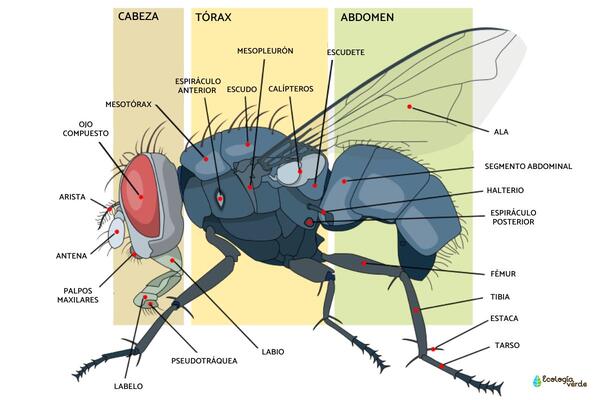
Mesophora flies are one of the vectors that spread intestinal infectious diseases in summer and autumn, and are also one of the initiators of the spread of various myiasis.
animal tags: flies
We created this article in conjunction with AI technology, then made sure it was fact-checked and edited by a Animals Top editor.